How To Grow Saffron:
Today, we learn the topic of how to grow saffron from bulbs and planting methods of saffron.
Introduction of Saffron:
Saffron is an autumn-flowering perennial spice plant also popularly known as “Red Gold”. It is a spice derived from the “Crocus sativus flowers”. What exactly saffron is?, well it’s nothing but a stigma or female flower part of the Crocus sativus. This is also commonly known as the “saffron crocus”. The saffron threads are collected from the flowers and are dried to use as a seasoning and coloring agent in the food industry. Saffron is one of the most costly spices traded across the globe. Saffron is native to Greece and currently raised as a commercial crop in many parts of the world.
Why is Saffron more expensive? Usually, saffron collected from a large number of flowers hence it required high labor cost making the costliest spice by weight in the world. However, growing saffron is not difficult. Saffron cultivated mostly in Mediterranean climatic conditions of the world. Saffron is grown commercially in many parts of the world. However, you can get a yield of saffron only once in a few years.
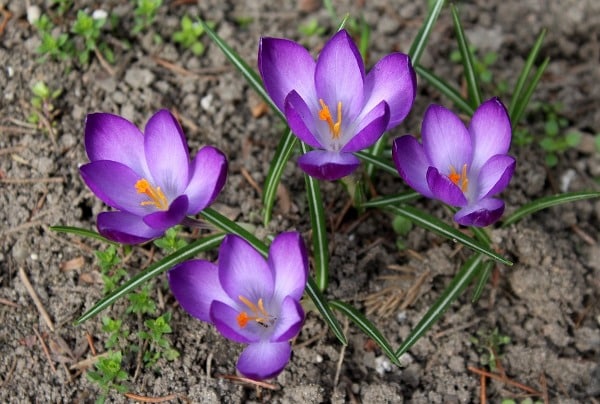
Where can we grow Saffron? Well, Saffron plants can be grown outdoors, indoors, pots, containers, backyards, greenhouse, polyhouse and even using hydroponics.
Scientific Name/Botanical Name of Saffron: Crocus sativus.
Commercial Part of Saffron: Stigma.
Family Name of Saffron: Iridaceae.
Genus of Saffron: Crocus.
Varieties of Saffron:
Major Varieties of Saffron include.
- Mongra or Lacha.
- Aquilla.
- Spanish Superior and Crème.
Types of Saffron:
The types depend on the coloring power.
- Negin.
- All-Red.
- Poushal.
- Bunch.
- Style.
Other Country Names of Saffron:-
- Spanish – Azafran.
- French – Safran.
- German – Safran.
- Swedish – Saffran.
- Arabic – Zafran.
- Dutch – Saffraan.
- Italian – Zafferano.
- Portuguese – Acofrao.
- Russian – Shafran.
- Japanese – Safuran.
- Chinese – Fan Hung-Hua.
Indian Names of Saffron:
Saffron is being called with different names in different languages.
- Hindi – Kesar.
- Bengali – Jafran.
- Gujarati – Keshar.
- Kannada – Kumnkuma Kesari.
- Kashmiri – Kong.
- Malayalam – Kunkumapoove.
- Tamil – Kungumapoo.
- Marathi – Keshar / Kesara.
- Punjabi – Kesar, Zafran.
- Sanskrit – Keshara / Kunkuma/ Aruna.
- Urdu – Zafran.
Health Benefits and Uses of Saffron:
Saffron is a sweet-smelling herb with a strong aroma and a bitter taste. The following are health benefits and uses of saffron.
Read: Citronella Farming, Planting, Growing.
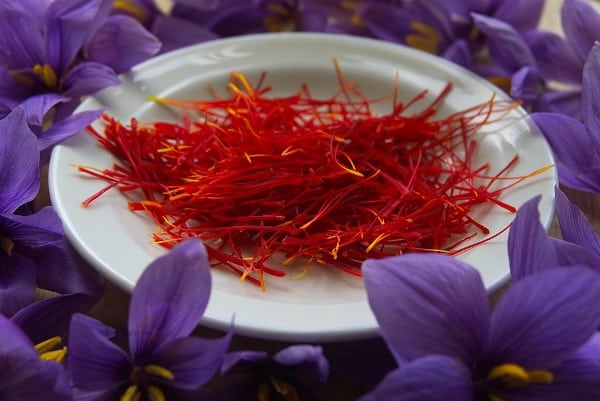
- Saffron fights against certain types of cancers.
- Saffron helps in improving vision.
- Saffron may cure conditions of insomnia.
- Saffron boosts brain health.
- It helps in curing asthma.
- Saffron is good for digestion.
- Saffron is a good wound healer.
- Saffron is good during pregnancy.
- Saffron boosts immune power.
- Saffron is good for the liver and heart.
- Helpful in treating inflammation.
- Saffron is used in Ayurveda to heal arthritis.
- Saffron is used as a culinary seasoning.
- Saffron is used as a perfume in cosmetics.
Top Saffron Production Countries:
Some of the major saffron production countries are.
- Iran.
- Spain.
- India.
- Greece.
- Azerbaijan.
- Morocco.
- Italy.
How To Grow Saffron – Climate Requirement:
Saffron crop loves the sunny climate. Saffron thrives best in hot and dry weather in summer, and cold in winter.
How To Grow Saffron – Soil Requirement:
Saffron thrives well in well-drained, friable, loose, low-density and rich soils. The soil with a pH value of 5.5 to 8.5 is ideal for saffron growing. Avoid the soils with a heavy clay texture. However, raised beds are the best option to use for good drainage in growing saffron. You can supplement the soil with 20 to 25 tonnes of well-decomposed farmyard manure to improve the soil fertility. Ensure the beds prepared for saffron cultivation must in a sunny place especially during the flowering stage. In case of commercial saffron farming, conduct a soil test to find soil suitability.
How To Grow Saffron – Propagation and Planting Materials:
Read: HF Cow Facts.
Commercial Saffron propagation is done by corms.
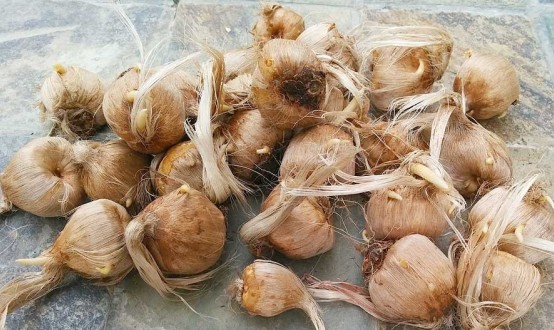
Saffron Lifecycle:
- Planting Stage: Generally, June – September
- Flowering Stage: In the case of big corms, October month. (from the year it is planted).
- Vegetative Development Stage:
- Leaves Dry Out Stage: in the month of May.
Land Preparation:
The selected site should be dry, calcareous, aired, flat and without trees. The field of saffron should be given a couple of deep ploughings (an about 20 to 21 cm deep). You can add good compost or manure for making the soil fertile. In the case of nitrogenous fertilizer, it is recommended to spread on the surface after planting the corms. You must make sure the field is always weed free and must carry out regular intercultural operations. The soil should be loosened before planting the corms in the field.
Planting and Spacing:
Corms should be sown at a 12 to 15 cm depth by maintaining corm to corm distance as 10 cm. Usually, it does not require, however, in a dry spell, you can water the field once to just maintain the soil moisture. Saffron corms can multiply each year and one can expect 5 corms out of 1 corm after 3 years of sowing.
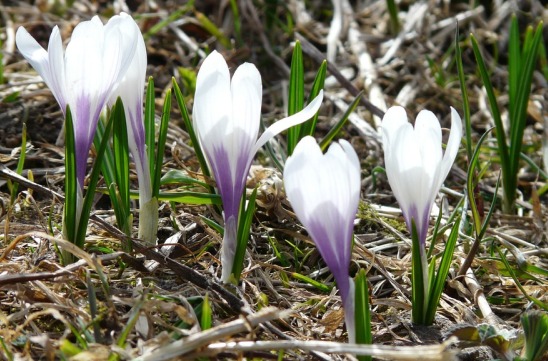
Irrigation Requirement:
A pre-flowering of saffron requires irrigation of about 100 mm and in regions with seasonal rainfall of 600 mm, post-flowering irrigation required is about 50 mm. In areas with seasonal rainfall of 400 and 200 mm, supplemental irrigation is required with an interval of 2 weeks.
Read about Cotton Cultivation.
Intercultural Operations:
You must always keep the saffron field weed free. You can remove weeds as they started growing or can give shallow raking between rows.
Manures and Fertilizers:
To make the soil fertile, supplement the field with well-decomposed farmyard manure or compost as mentioned in the soil requirement section. After saffron corms are planted, usually, they need very little care. You can apply appropriate fertilizers once a year, though they grow fine without being fertilizer application.
Saffron Plant Care:
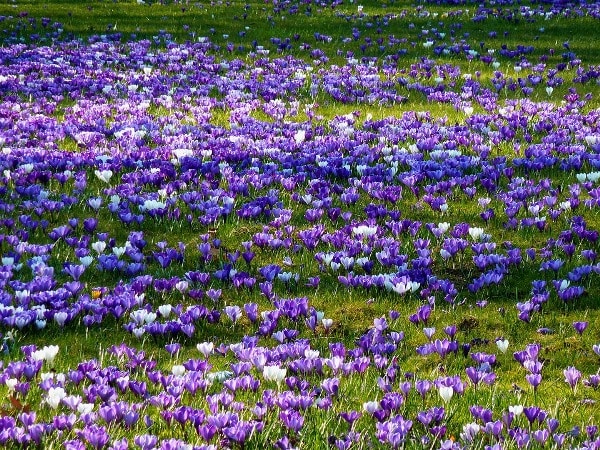
Well, controlling predators and insect pests and diseases in saffron growing is the first priority. In saffron crop, wood mice, voles and rabbits are main crop destroyers. To control mice and voles, destroy their tunnels regularly. Secured fencing needs to be put in place around the field to prevent any predators such as rabbits.
There are mainly 3 fungal infections can be found in the saffron garden.
- Fusarium: This fungal disease can attack the corm and leaves an orange-colored band on the limit of the healthy parts.
- Rhizoctonia Crocorum: This disease can cause brown ulceration & damping-off.
- Violet Root Rot: This disease can result in a damp rot. This disease is highly contagious. The mentioned diseases mostly appear after 3rd year of planting. As a preventive method, dig up corms and replant them in another field. Never use these affected corms in the same field at least for 10 to 12 years.
Note: Your local horticulture department is a good source of finding information about pests and diseases in Saffron Growing. You can seek horticulture professional help for pests and diseases in saffron farming.
Harvesting of Saffron:
In the case of corms planting, it takes 1 to 2 years to start flowering. Harvest open flowers in the morning. Care should be taken while removing the stigmas with your fingers/nails. Allow to air dry without using high heat. Leave the saffron plants to grow without the flowers.
The Yield of Saffron:
The yield of saffron depends on variety, soil type, sunlight, and other cultivation factors. However, mother corms planted more deeply yield a higher quality of saffron threads even though the production of flower buds and daughter corms are few in this case.
Approximately 150 flowers are required to produce 1 gram of dried saffron. During the first year of the saffron plantation, around 60 to 65 % of corms will produce 1 flower each. In the subsequent 2 years, you can expect each corm to produce 2 flowers.
Post Harvesting of Saffron Crop:
As part of post-harvest, filaments need to be dried out for preserving. Filaments drying should be done by putting the pistils on a sieve in a well-ventilated place between 45°C to 60°C for 15 minutes. After drying, filaments become light and breakable. Ensure to keep this dried one in an airtight tin in dark, dry place at least 1month before using or consuming. Generally, Saffron keeps its taste for 2 to 3 years.
Marketing of Saffron or Saffron Trade:
As saffron has excellent demand in domestic and export markets, you can contact any local spice board for selling in your produce. Saffron is being sold from Rs 400 to 600 Rs per 1 gram depending on grade and type and quality.
Read: Growing Herbs Hydroponically.

I’m interested in growing saffron, but could not find saffron bulbs in Srilanka . Can you help
You should check with any international nurseries online.
Very interested in growing Saffron but I need to who can supply the bulbs in Kenya and @ how much also if we have field support in Kenya
Dear Mr Musau,
Did you acquire seeds of saffron? I need some.
Andrew
I need to know the step by step details of aeroponic method to saffron farming and request to kindly help me to proceed for the same.